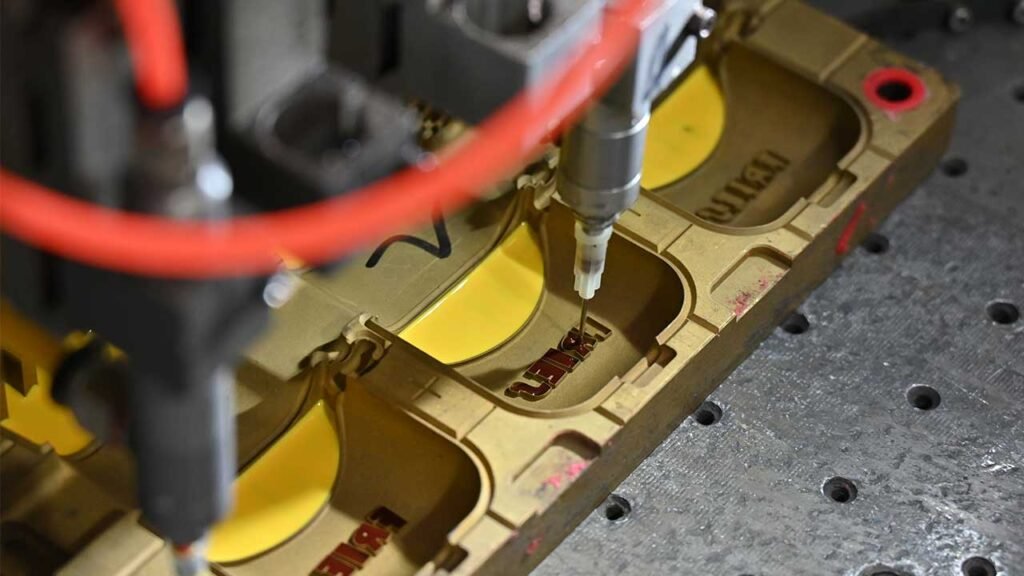Silicone injection molding is transforming how we make things, making it a big deal in manufacturing. This cutting-edge process is crucial for making lots of silicone parts used in everything from cars to medical tools. It’s all about making things with amazing accuracy, doing it fast, and making sure every piece is just right. Even though making complex, high-quality silicone items in large amounts can be tough, silicone injection molding makes it easier, reduces waste, and keeps products consistent.
In simple terms, silicone injection molding is a smart choice for making strong, high-quality silicone parts. It heats up silicone rubber, squirts it into a specially made mold under high pressure, and then cools it down to make the final piece. This lets us quickly make parts that are complicated in design and precise in size, all while keeping up with high quality.
Curious about how this could be good for making things? Let’s dive in and find out.
Why Pick Silicone for Injection Molding?
Silicone is awesome for many reasons: it can handle high and low temperatures, it’s flexible, it lasts a long time, and it doesn’t react with chemicals. This makes it perfect for lots of uses, like seals in cars, medical devices, and even kitchen gadgets, because it can handle tough conditions and keep working well.

How Does Silicone Injection Molding Work?
Making things with silicone injection molding is a detailed process with a few key steps. Here’s what happens:
Step 1: Getting the Material Ready
First, pick the right kind of silicone for the job and mix it with a curing agent and any colors or additives needed. This gets the silicone ready for molding.
Step 2: Designing and Making the Mold
Next, design and make the mold that will shape the silicone. This mold is usually made of metal and designed with computer software to be really precise. The mold’s design can be simple or complex, depending on what the finished part needs to look like.
Step 3: Injecting the Silicone
Once the mold is ready and the silicone is prepared, it’s time to inject the silicone into the mold. This is done by heating the silicone until it’s liquid and then pushing it into the mold under a lot of pressure. This makes sure the silicone fills the mold completely and captures all the details.
Step 4: Curing the Silicone
After injecting, the silicone in the mold needs to harden or cure. This usually happens by heating the mold, which makes the curing agent in the silicone work and solidify the silicone into its final shape.
Step 5: Taking the Part Out of the Mold
When the silicone is cured, the next step is to carefully take the finished part out of the mold. This needs to be done carefully to keep the part in good shape. Sometimes, a release agent is used on the mold before injecting the silicone to help with this step.
Step 6: Finishing Up
The last step is to trim any extra material, check the quality, and add any finishes or coatings needed. This makes sure the part meets all the requirements before it’s put together or packaged.
Every step is important for making high-quality, precise silicone parts. By carefully controlling and optimizing each part of the process, manufacturers can make a wide range of products efficiently and reliably.

The Advantages of Silicone Injection Molding
Silicone injection molding is awesome for a few big reasons. Let’s look at why it’s such a smart way to make things.
Super Accurate and Consistent
First off, this method makes sure everything is made just right, every time. It’s like if every cookie you baked came out the exact same – that’s what we’re talking about for manufacturing. This is really important for things that have to be perfect, like airplane parts or medical devices.
Saves Material and Money
Nobody likes wasting stuff. Silicone injection molding is cool because it uses just the right amount of material and hardly leaves any waste. Any silicone that isn’t used can be recycled and used again. This saves materials and is better for the environment.
Great for Many Uses
Silicone can be tweaked to have different qualities, like being able to stretch a lot without breaking or not being bothered by chemicals. Plus, with this molding method, you can make parts in all sorts of shapes and sizes. Whether it’s parts for cars that need to deal with heat or safe tools for surgery, this method can handle it.
Fast and Cheap
Making things fast is key, and silicone injection molding speeds things up. It makes parts quickly, which saves on labor costs and helps companies get their products out there faster. Also, because the parts are made so well, they last longer, which means you don’t need to replace them as often.
Custom and Complex Parts? Easy.
Need something special or really complicated? Silicone injection molding is up for the challenge. It can make parts with all kinds of designs and features, which is great for creating new products or meeting specific needs.
Challenges?
Sure, silicone injection molding has lots of perks, but it’s not without its challenges. The initial cost for designing molds and setting up production can be high. However, the efficiency and quality of the end products often make up for these upfront costs. Also, picking the right silicone material for the job is key to making sure the parts do what they’re supposed to.
What’s Next for Silicone Injection Molding?
The future looks bright, with new tech and better materials on the horizon. We’re expecting to see cooler mold designs, more automation, and materials that are kinder to our planet. As more people want high-quality silicone parts, this molding method is going to become even more important in making all kinds of things.
Wrapping Up
Silicone injection molding is changing the game in manufacturing, making it possible to produce top-notch, durable silicone parts in a smart, efficient way. Its impact is huge, touching all kinds of industries and showing that this tech is here to stay, not just a passing trend.
So, there you have it – a deep dive into silicone injection molding, why it’s such a big deal, and what we can expect in the future.